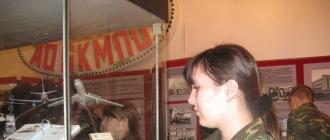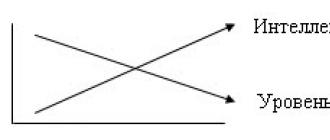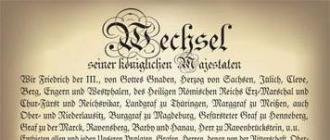alcoa company. See what "Alcoa" is in other dictionaries. e: Hall experiments with aluminum production
: A.A.
The company's headquarters is located in Pittsburgh (Pennsylvania, USA).
Story
In 2001, Alcoa formed a strategic alliance with the Chinese aluminum company Chalco, the country's largest aluminum producer. On September 12, 2007, Alcoa sold its stake.
In 2004, the company's fine chemicals division was sold to the Rhône Group, which then changed its name to Almatis, Inc.
In Iceland in 2005, Alcoa began construction of Alcoa Fjarðaál, a primary aluminum smelter - its first completed smelter in 20 years, despite heavy criticism from local and international non-governmental organizations regarding a controversial dam project to generate electricity. and meeting the needs of the plant. Alcoa has also completed, or in some cases continues to implement, primary aluminum expansion projects in Brazil, Jamaica and Pinjarra, Western Australia.
In 2006, the corporation moved its headquarters from Pittsburgh to New York. Although the company is headquartered in New York City, the company's operational headquarters are still located at the Corporate Center in Pittsburgh. The company employs approximately 2,000 people at its Corporate Center in Pittsburgh and 60 people at its headquarters in New York.
In May 2007, Alcoa offered Alcan, a former subsidiary, to buy a majority stake for $27.93 billion with the goal of combining the 2 companies into the world's largest aluminum producer. Alcan did not respond to the offer and later announced a friendly takeover by Rio Tinto in July 2007.
The Packaging and Consumer Business was sold in the first quarter of 2008.
On May 8, 2008, Klaus Kleinfeld was appointed chief executive officer of Alcoa, replacing Alan Belda in this position. On April 23, 2012, following the planned retirement of A. Beld, the company's board of directors elected K. Kleinfeld as its chairman.
On November 1, 2016, Alcoa split into two companies: Alcoa Corporation, which mines and produces aluminum, and Arconic, which produces products from aluminum and other metals.
Owners and management
The company's market capitalization as of February 12, 2007 was $28.2 billion. In early February 2007, information appeared that the British-Australian mining company BHP Billiton and the Australian Rio Tinto were considering purchasing Alcoa. The transaction amount could be up to $40 billion.
The President and CEO of the company is Klaus Kleinfeld ( Klaus Kleinfeld).
Activity
Alcoa has operations in 31 countries. The company operates at all main stages of industrial production: technology, mining, refining, smelting, processing, recycling. Income from the extraction and processing of aluminum and alumina accounts for three-quarters of Alcoa's total revenue. The company's other areas of activity include precision castings and fasteners used in industry and aviation. The company produces aluminum structures, siding, cast aluminum products, including car wheels, as well as aluminum. The company's products are used in the industrial, aircraft, automotive, commercial vehicle, packaging, construction, oil and gas and defense industries.
The number of personnel of the company is 61 thousand people (2012). The company's revenue in 2011 amounted to $24.4 billion, net profit - $0.094 billion.
Alcoa in Russia
Alcoa has been operating in Russia since 1993. The representative office is located in Moscow.
In 2005, the company included two large aluminum processing plants: Samara Metallurgical Plant (since 2009 - Alcoa SMZ CJSC) and Belokalitvinsky Metallurgical Production Association (in the city of Belaya Kalitva, Rostov Region), Alcoa Metallurg Rus CJSC) . They were purchased from the Russian Aluminum company for $257 million. In July 2007, Belokalitvinsky Metallurgical Production Association OJSC was reorganized by merging with Alcoa Metallurg Rus OJSC (AMR).
CJSC Alcoa SMZ produces sheet-rolling, pressing and forging-stamped products: rolls, including can tape (case, key, cap), can tape, painted tape, sheets, profiles, panels, pipes, stampings and forgings, including including large ones.
CJSC Alcoa Metallurg Rus produces sheet-rolling, pressing and forging products: sheets, plates, panels; profiles, rods, pipes, stampings, forgings, aluminum cookware with non-stick coating, aluminum matte cookware, special aluminum cookware (flasks, cans, etc.) under the Kalitva brand using technologies and non-stick coatings of companies
By 8.7% to $3.25 billion. EBITDA margin was 14.4% versus 14.9% a year earlier. The company's total debt increased by 3% to $9.1 billion, including net debt of $7.18 billion.
At the end of the reporting period, the company reduced alumina production by 5.3% in annual terms to 15.72 million tons. Primary aluminum production at Alcoa plants decreased by 10% year on year and amounted to 2.811 million tons versus 3.125 million tons in 2014.
At the end of the fourth quarter, alumina production was at the level of 3.856 million tons (-2.5% compared to the third quarter of 2014), aluminum - 699 thousand tons (at the level of the previous quarter).
In 2016, Alcoa expects global demand for aluminum to grow by 6% compared to 2015 to 60.5 million tons, the company said. At the same time, Alcoa predicts that in 2016 the shortage of aluminum on the world market will be 1.2 million tons, alumina - 2.8 million tons due to the closure of capacities around the world.
Story
2000: International expansion
The last decades of the twentieth century saw rapid growth in this industry. Alcoa responded to increased competition by expanding its technical capabilities, improving technology, reducing costs, expanding its product range, markets and operations in different countries, and developing an unparalleled natural resource base around the world.
In the late 1990s and early 2000s, Alcoa significantly expanded its global presence through domestic growth, international collaborations, and major acquisitions in Europe and .
Aluminum is preferred in the production of convenient packaging, new generations of airplanes and cars, and thousands of other modern products, which thanks to this have become stronger, safer, lighter, their production less energy-intensive, and their disposal more efficient.
1907: Name change to Aluminum Company of America (Alcoa)
By 1907, the sprawling company had bauxite mines in Arkansas, a refinery in Illinois, and three smelters in New York and Canada. The owners changed the name of the company to a more appropriate one - “Aluminum Company of America”. Later, when the company began to open its branches in different countries of the world, this name became Alcoa Inc.
In the late 1930s, a pound of aluminum cost 20 cents, and the company produced more than 2,000 products. Then World War II began. Demand for aluminum doubled, as did Alcoa's production. But much of the new capacity was financed by the federal government, and after the war these plants were sold to competing companies.
1888: Creation of the Pittsburgh Reduction Company
Hall found his sponsors in nearby Pittsburgh. It was a group of six industrialists led by Alfred E. Hunt. These bold entrepreneurs formed the Pittsburgh Reduction Company and built a small plant in what is now Pittsburgh's Strip District. On Thanksgiving Day in 1888, Hall and his first employee, Arthur Vining Davis , released the first batch of industrial aluminum using Hall technology.
The mountain of bullion grew, but there were still no buyers. Manufacturers were afraid to work with unfamiliar metal. To set an example, Davis began making some products, starting with an aluminum kettle.
Meanwhile, Hall continued to improve his technology and develop alloys. He was able to reduce the cost of aluminum bars from $4.86 per pound in 1888 to 78 cents in 1893.
Production grew, and soon aluminum was used to make kitchen utensils, foil, electrical wires and cables, car bodies, and parts of the engine used in the Wright brothers' first airplane, tested at Kitty Hawk.
1880s: Hall experiments with aluminum production
Frank Jewitt, a professor at Oberlin College in Ohio, showed his chemistry students a piece of aluminum and said that whoever could discover an economical way to produce this metal would become rich.
One of those students, Charles Martin Hall, had been experimenting with minerals since he was 12, turning a small wooden shed behind his house into a makeshift laboratory.
After graduating, he continued his experiments in the barn. He learned how to extract aluminum oxide - alumina - and created his own carbon crucible with a cryolite bath containing alumina and passed an electric current through it.
The result was a hardened mass. He let it cool and then smashed it with a hammer. And I found several small balls of pure aluminum.
It was a wonderful discovery. But to move on, Hall needed money.
Business in Russia
Alcoa production facilities in Russia
CJSC Alcoa SMZ is the largest enterprise in Russia for the production of aluminum semi-finished products.
According to 2012 data, the share of Alcoa SMZ in the Russian rolled aluminum market is about 40%.
CJSC Alcoa SMZ is:
- total land area - 1,380,000 sq. m.
- total area of buildings and structures - 680,000 sq. m.
CJSC Alcoa SMZ has 3 business divisions:
- Foundry
- Rolling production
- Press production (it includes a group for the production of forging products - forgings and stampings)
CJSC Alcoa SMZ produces a wide range of sheet-rolling, pressing and forging products:
- rolls, including can tape (body, key, lid), canning tape, painted tape, sheets;
- profiles, panels, pipes, stampings and forgings, including large ones
Story
2015: Alcoa sold 100% of the shares of Alcoa Metallurg Rus CJSC
At the end of March 2015, Alcoa sold 100% of the shares of CJSC Alcoa Metallurg Rus (before July 2009 - Belokalitvinsky Metallurgical Production Association). Alcoa acquired these two plants from RusAl in 2005 for $257 million.
The buyer of the Belokalitvinsk metallurgical production association (ZAO Alcoa Metallurg Rus; AMR, Rostov region) was ZAO Lainen. General Director of CJSC Lainen Vladimir Chertovikov told Izvestia that the deal was closed. The final buyer of the enterprise in Belaya Kalitva was the Stupino Titanium Company.
“Lainen is a subsidiary of the Stupino Titanium Company (STK),” says Chertovikov.
Back in January 2015, the Federal Antimonopoly Service granted the request of ZAO Lainen to purchase 100% of the shares of ZAO Alcoa Metallurg Rus. According to SPARK-Interfax, 100% of STK belongs to Nikolai Timokhin, Lainen with an authorized capital of 10 thousand rubles was created in August 2014.
- The plant in Belaya Kalitva produces products in our profile; STK produces about 100 tons of titanium products monthly for the aviation industry. AMR has interesting technologies and equipment, the use of which will give a synergistic effect to both enterprises. We are going to increase production in Kalitva in order to increase export supplies. Now the plant's capacity is about 20 thousand tons per year. The crisis is not a hindrance for us; on the contrary, due to low ruble costs, this is our chance to enter Western markets,” Vladimir Chertovikov explained to Izvestia the reason for the purchase of the plant owned by Alcoa.
Alcoa itself claims that the sale of AMR is due to the fact that the plant does not fit into the company’s new strategy, which was adopted in 2013. According to it, Alcoa should strengthen its position in the main growth markets: automotive, aircraft manufacturing and the market of household appliances and packaging.
“The decision to sell the enterprise has nothing to do with sanctions against Russia; any business transformation actions considered by Alcoa are consistent with the company’s strategy, within which it concentrates its development on markets and products with high growth potential,” an Alcoa representative told Izvestia.
At the same time, in the spring of 2014, Alcoa President and CEO Klaus Kleinfeld refused to go to the St. Petersburg International Economic Forum (SPIEF-2014). As representatives of the press service of the company, which ranks third among the world's largest aluminum producers, told reporters at the time, this decision was made due to pressure from the US authorities.
However, as analysts have repeatedly stated, many owners of American companies with assets in Russia have long been trying to minimize contracts and sell local assets.
“Russia was a promising market for Alcoa, but not the most important one,” notes one of them.
Representatives of Linen and Alcoa refused to disclose the amount of the transaction.
Deputy editor-in-chief of the Metal Supply and Sales magazine Leonid Khazanov believes that the cost of AMR may be equal to the amount that Alcoa has invested in the enterprise in the form of investments since the purchase in 2005, that is, about $160 million. Alcoa, according to him, has successfully modernized the enterprise , but now it is underloaded.
“For the Stupino company, which supplies products to the Russian aerospace industry, the plant in Belaya Kalitva will provide access to new customers,” says Khazanov.
Alcoa bought the Samara Metallurgical Plant (Alcoa SMZ) and the Belokalitvinsky Metallurgical Production Association (Alcoa Metallurg Rus) in 2005 for $257.5 million from Oleg Deripaska’s Russian Aluminum. Alcoa's total investments in the acquisition and modernization of plants amounted to more than $850 million at the beginning of 2015. SMZ accounted for $450 million, and the plant in Kalitva - $160 million.
“In 2014, the plant in Belaya Kalitva became profitable for the first time,” a company representative told Izvestia.
Factories in Samara and Kalitva produce rolls, including can tape, can tape, painted tape, sheets, profiles, panels, pipes, stampings, forgings, and dishes.
The company has been preparing the deal for a long time. Thus, until October 2014, AMR owned 100% of the shares of Samara ZAO Alcoa SMZ, the second Alcoa plant in Russia. In September, Alcoa reduced the authorized capital of AMR to 3.14 billion rubles from 8.83 billion rubles, transferring SMZ shares to the parent LLC Alcoa Rus Investment Holdings.
Alcoa plans to receive $1 billion in additional revenue in 2016 due to the optimization/revision of rolling capacities around the world. In 2014, the company had already closed two rolling mills in Australia and sold three European operations.
2012: Investment program
In 2012, based on existing forecasts for the development of the global and Russian aluminum markets, investments are directed to the entire range of products from aluminum alloys from foundry, rolling, forging and pressing industries, which provide their products to the most dynamically developing segments of the Russian economy.
The investment program implemented at Alcoa SMZ CJSC includes:
- Foundry: development of the production of high-quality ingots for the production of semi-finished products for the aviation and space, construction and food industries.
- Press production: development of production of semi-finished products for the oil and gas and construction industries.
- Forging production: development of production of large-sized forgings and stampings for the aviation and space industries
- Rolling production: development of production of flat rolled products for the aviation and space, construction, canning and food industries.
Owners and management
Activity
Alcoa in the Russian Federation
Alcoa in the world
Approval for the production of plates according to ABS requirements (American Bureau of Shipping);
Certificate for the production of sheets and plates (NV 5083 0, H112, H116, H321 with a thickness of up to 12 mm) according to the requirements of DNV (Det Norske Veritas);
NADCAP Certificate No. 125250 for ultrasonic testing.
The company is undergoing environmental management system certification.
supplierimage286219_1-10_%D0%92_%D0%BC%D1%83%D0%B7%D0%B5%D0%B5_%D0%90%D0%BB%D0%BA%D0%BE%D0%B0"> 
Dactivities in the field of corporate social responsibility
IN period from 2005 to 2008 total investments Alcoa Russia and the Alcoa Foundation in social programs amounted to 3.2 million US dollars (Samara region - 1.4 million dollars, Rostov region - 1.3 million dollars,
Moscow region - 0.5 million dollars).
The main activities of Alcoa and the Alcoa Foundation in Russian communities are programs in the field of education and sustainable development. These include the Alcoa Foundation's Technical Education Support Program, which operates at three leading technical colleges, as well as educational programs for youth on the environment and sustainable development.
In addition to the above long-term programs funded by the Alcoa Foundation, Alcoa SMZ and AMR also implement various projects aimed at solving local problems in their communities. Volunteers from businesses take part in many of these projects. As part of Alcoa's company-wide Ten Million Trees program, the company's Russian employees planted about 6,000 trees.
Investments in community development in the Samara region in period from 2005 to 2009 amounted to more than 1.4 million United States dollars.
Programs implemented in the Samara region:
Alcoa Foundation technical education support program at Samara State Aerospace University (SSAU): scholarships for engineering students, scholarships for young teachers, technical modernization classrooms and laboratories.
Alcoa Foundation program for environmental protection and sustainable development “Responsible for the Future” for secondary schools in the Kirovsky district of Samara.
Heart to Heart Children's Cardiac Care Program supported by the Alcoa Foundation.
Projects of Alcoa SMZ CJSC for the local community: linguistic sessions for schoolchildren in summer camps, assistance to the Special Education Center for children with disabilities, landscaping and landscaping in the Metallurg district, assistance to veterans and other projects.

Investments in community development in the Rostov region from 2005 to 2009 amounted to more than 1.3 million US dollars.
Programs implemented in the Rostov region:
Alcoa Foundation technical education support program at Don State Technical University (DSTU): scholarships for engineering students, scholarships for young teachers, technical modernization classrooms and laboratories.

Alcoa Foundation program for environmental protection and sustainable development “Responsible for the Future” for secondary schools in the Belokalitvinsky district.
Projects of JSC "AMR" for the local community: assistance to the boarding school "Belokalitvinsky Matvey Platov Cossack Cadet Corps", support for the social rehabilitation center, improvement and landscaping in Belaya Kalitva, assistance to veterans and other projects.

Alcoa Management
Andrey Nikolaevich Donets
The president Alcoa Russia
Chairman of the Board of Directors of ZAO Alcoa SMZ
Chairman of the Board of Directors of ZAO Alcoa Metallurg Rus Moscow
Andrey Donets was born in 1962 in Moscow.
In 1985 he graduated from the First Moscow Medical Institute. In 1998, he received a Master of Business Administration (MBA) diploma from the Academy of National Economy under the Government of the Russian Federation.
In 1985-1993 worked as a doctor in various medical institutions. Since 1993, he has held senior positions in various commercial structures.
Since 1998 - Director for Market Analysis and Sales, and since 2000 - Commercial Director of the ROSTAR plant. Since 2004 - Deputy General Director of RUSAL for packaging business, General Director of ROSTAR LLC, Chairman of the Board of Directors of RUSAL Dmitrov.
From January to November 2008 - General Director of REXAM Russia.
In November 2008, he was appointed president of Alcoa Russia. ZAO Alcoa SMZ and Chairman of the Board of Directors of ZAO Alcoa Metallurg Rus.

AlexanderMIkhailovichDritz
Director of Technology, Alcoa Russia,
Head of the Moscow office of Alcoa SMZ CJSC Moscow
Alexander Mikhailovich Drits was born in 1947 in Moscow.
In 1969, after graduating from the Moscow Institute of Steel and Alloys (MISiS), he began working at the All-Union Institute of Light Alloys (VILS), where he worked his way up from an engineer to the head of the heat treatment sector for aluminum alloys.
In 1975 he defended his PhD thesis on thermomechanical processing of alloys of the Aluminum-Magnesium-Zinc system.
In 1986, for a series of works on the creation of alloys 1161, 1973, 1933 and the development of technology for producing large-sized semi-finished products from them used in the design of transport aircraft, Alexander Drits was awarded the Council of Ministers of the USSR.
In 1984-1993 Alexander Mikhailovich worked at the All-Union Institute of Aviation Materials (VIAM) as the head of the laboratory of welded aluminum alloys. During my time at VIAM, together with my colleagues, a large range of work was carried out on alloy 1201 to create trade items for special equipment, including the Energia-Buran aerospace system. Aluminum alloys with lithium 1450, 1451, 1460, 1461, 1470 were developed and introduced
Since 1993 - Executive Director of the representative office of the Alcoa organization in the Russian Federation and the CIS, and after the purchase of Alcoa in 2005, the Samara Metallurgical Plant (currently Alcoa SMZ CJSC) and the Belokalitvinsky Metallurgical Production Association of Enterprises (currently Alcoa CJSC Metallurg Rus") became deputy general director of Alcoa Rus LLC and director of technology at Alcoa Russia. Since 2008, he also took the position of head of the Moscow office of Alcoa SMZ CJSC.

OlegANDGorevichTOAlinsky
Vice President of Corporate Affairs, Alcoa
1998 graduated from Hastings College (USA), in 2000 - Pyatigorsk State Linguistic University, in 2003 - Moscow State Institute of Steel and Alloys (Technological University). In 2006, he graduated from the Department of Legal Support of Market Economy of the Russian Academy of Public Administration under the President of the Russian Federation. Candidate of Economic Sciences. Doctoral student and associate professor of the Department of Economics and Management of the Moscow Institute of Steel and Alloys (Technological University).
From 2001 to 2003, he worked his way up from a leading specialist to the head of the department for the sale of long products of the Export Administration sales OJSC Oskol Electrometallurgical Plant.
Since 2003 - Head of the Department of Strategic Development and Energy and Resources Conservation in Metallurgy of the Ministry of Industry, Science and Technology of the Russian Federation.
Since 2005 - Deputy General Director for Trade Policy and Interaction with Government Bodies of Gazmetallproekt LLC; Trading Advisor politics manager Director of OJSC Oskol Electrometallurgical Plant.
Since 2006 - Vice President for Relations with Government Bodies authorities Moscow representative office of The PBN Company.
Since April 2008 - Director of Corporate Relations at Alcoa Russia. In August of the same year, he was elected Chairman of the Board of Directors of CJSC Alcoa Metallurg Rus (formerly BKMPO).
Since April 2009 - Vice President for Corporate Relations at Alcoa Russia.
Since June 2009 - Member of the Board of Directors of CJSC Alcoa Metallurg Rus and Member of the Board of Directors of CJSC Alcoa SMZ.
In his current position as Vice President for Corporate Relations, Oleg Kalinsky is responsible for the organization’s work on internal and external communications, namely: interaction with government agencies authorities at the federal, regional and local levels, for interaction with the media, for working with the community, with company employees in the Russian Federation, with industry associations, trade unions and other non-profit organizations. He also oversees the implementation of the organization's corporate social responsibility and charitable programs in the Russian Federation.
In 2008, based on the results of a multi-level selection, he entered the top 300 participants in the “Personnel Reserve - Professional Team of the Country” project in the “Business Community” direction (in total, 71 managers were selected in this area in the Russian Federation. More than 18,000 people took part in the selection in 5 areas ). In 2007, he became a Laureate and Diploma holder of the 1st degree of the Project “Professional Team of the Country” in the section “and services” (among the 83 best managers of the industrial complex in the Russian Federation).

Evgeniy Viktorovich Luzov
General Director of Alcoa RUS LLC
Director of Legal Relations Alcoa Russia
Member of the Board of Directors of ZAO Alcoa SMZ
Member of the Board of Directors of ZAO Alcoa Metallurg Rus Moscow
Evgeny Luzov was born in the Moscow region in 1965.
In 1988 he graduated from the Faculty of Law, in 1991 - postgraduate study at the Faculty of Law of M.V. Lomonosov Moscow State University.
Since 1991 - lawyer at Byuntki Interconsulting. In the period from 1993 to 1998, he was the head of the legal department of the Moscow office of IBM Eastern Europe/ ", in 1998-2002. worked as an IBM lawyer Europe MIDDLE EAST AFRICA in Vienna, Austria.
Returning to the Russian Federation in 2002, Evgeniy accepted the position of heading the claims group at Sidanco, and a year later he moved to the Metro Cash and Carry organization.
In 2005, Evgeniy headed the Legal Department in the Russian division of Alcoa, and in 2007 he was also appointed General Director of Alcoa Rus, one of the structural divisions of the corporation in the Russian Federation.
From January to November 2008, Evgeniy Luzov was manager Alcoa for the Russian Federation, responsible for the activities of the Legal Service, Compliance with corporate standards, relations with the government, external relations of the organization, coordination of the activities of the Alcoa Foundation.

Maxim Yurievich Smirnov
Chief Financial Officer of Alcoa RussiaMoscow
Maxim Smirnov was born in 1965 in Moscow.
In 1987 he graduated from the Faculty of Economics of Moscow State University. M.V. Lomonosov with a degree in planning.
The existing share purchase program has been suspended
Capital expenditures in 2009 were reduced by 50%
The implementation of the program to reduce the components of the initial cost of production has been accelerated
Added a new resource for renewable 364-day loans
Staff reductions have begun worldwide
Wages have been frozen and new hires have been suspended worldwide.
It was decided to sale divisions for the production of electronic and electrical systems, foil, transport products in Europe and the closure of the only remaining enterprise for the production of alloy wheels
In addition, we exchanged shares in the Sapa joint venture for the remaining shares in the Norwegian operations of Elkem Aluminum with the Orkla ASA entity. This deal allowed us to increase our capacity in the field of primary production while simultaneously separating a division that operates in difficult market conditions.
In the long term, our business strategy is aimed at achieving the following goals in a sustainable and reliable manner:
Demonstrate rapid and effective implementation of measures in response to changing economic conditions in accordance with our strategic priorities - profitable growth, Alcoa advantages and disciplined execution
Take advantage of our advantages in bauxite and alumina production and continue to provide long-term production supplies inexpensive energy

Complete growth and development investment projects, such as the development of bauxite deposits and the construction of associated processing plant and hydroelectric power (HPP) projects
Continue to increase profits through productivity and high value-added products
Develop new types of products for fast-growing consumer finished goods markets through the use of innovative, patented technological solutions, unique equipment and complex processes.
Take a prudent approach to money management and take steps to preserve cash
Conduct business in accordance with business ethics and comply with all laws and regulations
Improve the economic and social well-being of the communities in which we operate
Carry out its activities with minimal impact on the natural habitat and biological resources
advantages3-4_%D0%9F%D0%BE%D0%BC%D0%B5%D1%89%D0%B5%D0%BD%D0%B8%D1%8F_%D0%97%D0%90%D0% 9E_%D0%90%D0%BB%D0%BA%D0%BE%D0%B0_%D0%9C%D0%B5%D1%82%D0%B0%D0%BB%D0%BB%D1%83% D1%80%D0%B3_%D0%A0%D1%83%D1%81"> title="3.4 Premises of JSC Alcoa Metallurg Rus" width="639"> !}
Main difficulties
There are a number of short-term and long-term challenges that our firm faces as we expand our reach and more fully integrate sustainability into our business.
The short-term challenges lie more in conserving cash and liquidity. Long-term goals include:
Eliminating workplace fatalities
Identifying reliable sources of inexpensive energy
Maintain 25% reduction in greenhouse gas emissions
Reducing freshwater consumption and mercury emissions to achieve our short- and long-term goals.
Grade risks
The most important risks for the Alcoa organization include:
An unclear perspective on the duration and complexity of the current global economic collapse, instability of financial markets, and their impact on Alcoa
Adverse developments in the aluminum industry as a whole, including conditions and fluctuations offers and demand, including prolonged declines or deterioration associated with London Metal Exchange prices for primary aluminum
Inability of financial institutions to fulfill their obligations under credit lines
Rising energy tariffs and outages supplies electricity
Height cost raw materials or the effect of a significant lag in the reduction of production costs associated with commodities or London prices stock exchange metals
Inability to successfully implement development projects in Brazil and/or achieve the expected benefits from the asset portfolio optimization strategy
Political and economic risks and events beyond our control in the countries where we operate
Fluctuations in foreign exchange rates and interest rates, as well as other economic factors in the countries where we operate
Declining demand in China
Highly competitive environment affecting our markets and products
Company creation: CJSC Alcoa SMZ (Samara Metallurgical Plant) is a division that was part of the American metallurgical company Alcoa at the beginning of 2005.
Field of activity: non-ferrous metallurgy - production of aluminum products.
Full title: closed joint stock company Alcoa SMZ.
The head office of Alcoa SMZ is located in Moscow. One of the largest Russian factories for the production of aluminum products has a foundry, as well as equipment for the production of flat rolled sheets, hot stamping (stamping press), extrusion processing (extrusion press) and coating. The main recipients of Alcoa SMZ products on the Russian market are food, automotive, light industry and construction companies, as well as trading enterprises in the Moscow region, the Central region of the Russian Federation, the Volga region and the Urals. In addition, the company exports products to 29 countries. The Samara plant has mastered the production of aluminum tape, which is used to make food cans for beer and soft drinks.
CJSC Alcoa SMZ represented by
The President of Alcoa Russia, Chairman of the Board of Directors of CJSC Alcoa SMZ is Andrey Nikolaevich Donets.
Managing Director of Alcoa Russia, General Director of CJSC Alcoa SMZ - Mikhail Grigorievich Spichak.
Contact Information
st. Alma-Atinskaya 29, building 33/34
Samara 443051
Russia





